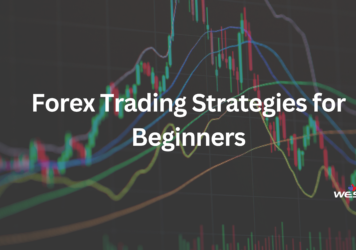Trading Strategy for forex Beginner
Forex Trading Strategy for Beginners: A Step-by-Step Guide
Forex trading, or trading in the foreign exchange market, can be a lucrative venture for those who approach it with the right mindset and strategy. For beginners, the world of forex might seem overwhelming with its jargon, charts, and volatility. However, with a solid strategy, you can navigate this market with confidence. Here’s a comprehensive guide to building a trading strategy for forex beginners.
Step 1: Understand the Basics
Before jumping into trading, familiarize yourself with key forex concepts:
- Currency Pairs: Forex trading involves buying one currency and selling another. Examples include EUR/USD, GBP/JPY, and USD/JPY.
- Pip: The smallest price movement in forex trading, typically the fourth decimal place.
- Leverage: Borrowed capital that allows you to control larger positions with smaller investments.
- Spread: The difference between the bid (sell) and ask (buy) price.
- Take time to learn about market hours, major currency pairs, and economic factors influencing exchange rates.
Step 2: Choose a Trading Style
Your trading style should align with your goals, risk tolerance, and time availability. Popular styles include:
1. Scalping: Short-term trades lasting seconds to minutes, focusing on small price movements.
2. Day Trading: Trades executed within a day without holding positions overnight.
3. Swing Trading: Holding positions for days or weeks, capturing medium-term trends.
4. Position Trading: Long-term trades based on macroeconomic trends and data.
For beginners, swing trading is a good starting point as it allows more time for analysis and decision-making.
Step 3: Develop a Risk Management Plan
Risk management is crucial to protect your capital. Key principles include:
Risk-to-Reward Ratio: Aim for at least a 1:2 ratio, meaning you risk $1 to potentially make $2.
Position Sizing: Only risk 1-2% of your trading capital per trade.
Stop-Loss Orders: Set predefined price levels to exit losing trades automatically.
Step 4: Use Technical and Fundamental Analysis
Successful trading requires analyzing price movements and market conditions:
Technical Analysis
Use charts to identify patterns like support and resistance levels, trendlines, and candlestick patterns.
Employ indicators like Moving Averages, RSI (Relative Strength Index), and MACD (Moving Average Convergence Divergence) to predict price direction.
Fundamental Analysis
Stay informed about economic indicators such as interest rates, GDP, and employment data.
Monitor geopolitical events and central bank decisions that influence currency movements.
Step 5: Create and Test a Trading Plan
Your trading plan is a roadmap for every decision you make in the market. Include:
1. Entry and Exit Criteria: When and why you’ll enter and exit trades.
2. Preferred Time Frames: Focus on daily or 4-hour charts to start.
3. Indicators and Tools: List the tools you’ll use to make trading decisions.
Use a demo account to test your plan in real-time without risking real money. Adjust and refine your strategy based on your results.
Step 6: Start Small and Stay Disciplined
Once you’re confident with your plan, transition to a live account with a small amount of capital.
Avoid Emotional Trading: Stick to your plan and resist the urge to chase losses or make impulsive trades.
Keep a Trading Journal: Record every trade, including your reasoning, results, and lessons learned.
Step 7: Continuously Educate Yourself
The forex market is dynamic and ever-changing. Stay updated by:
Reading market news and reports.
Watching tutorials and attending webinars.
Learning from experienced traders.
Conclusion
Trading forex as a beginner can be a rewarding journey if approached with patience and discipline. Focus on mastering the basics, developing a solid strategy, and implementing strict risk management. Remember, success in forex trading doesn’t happen overnight—it’s a skill that grows with practice and learning.
Take the first step today, and may your trading journey be a profitable one!











